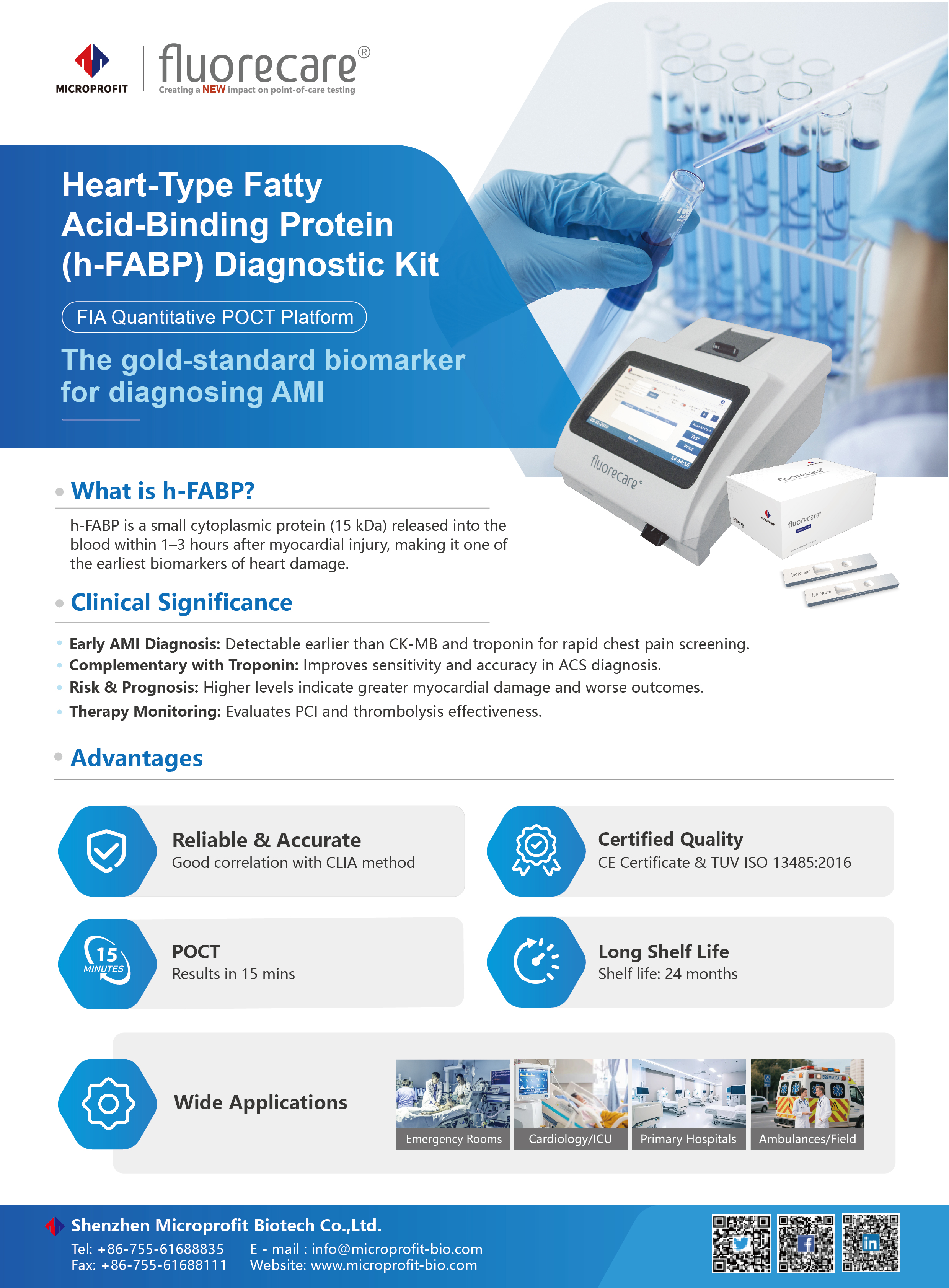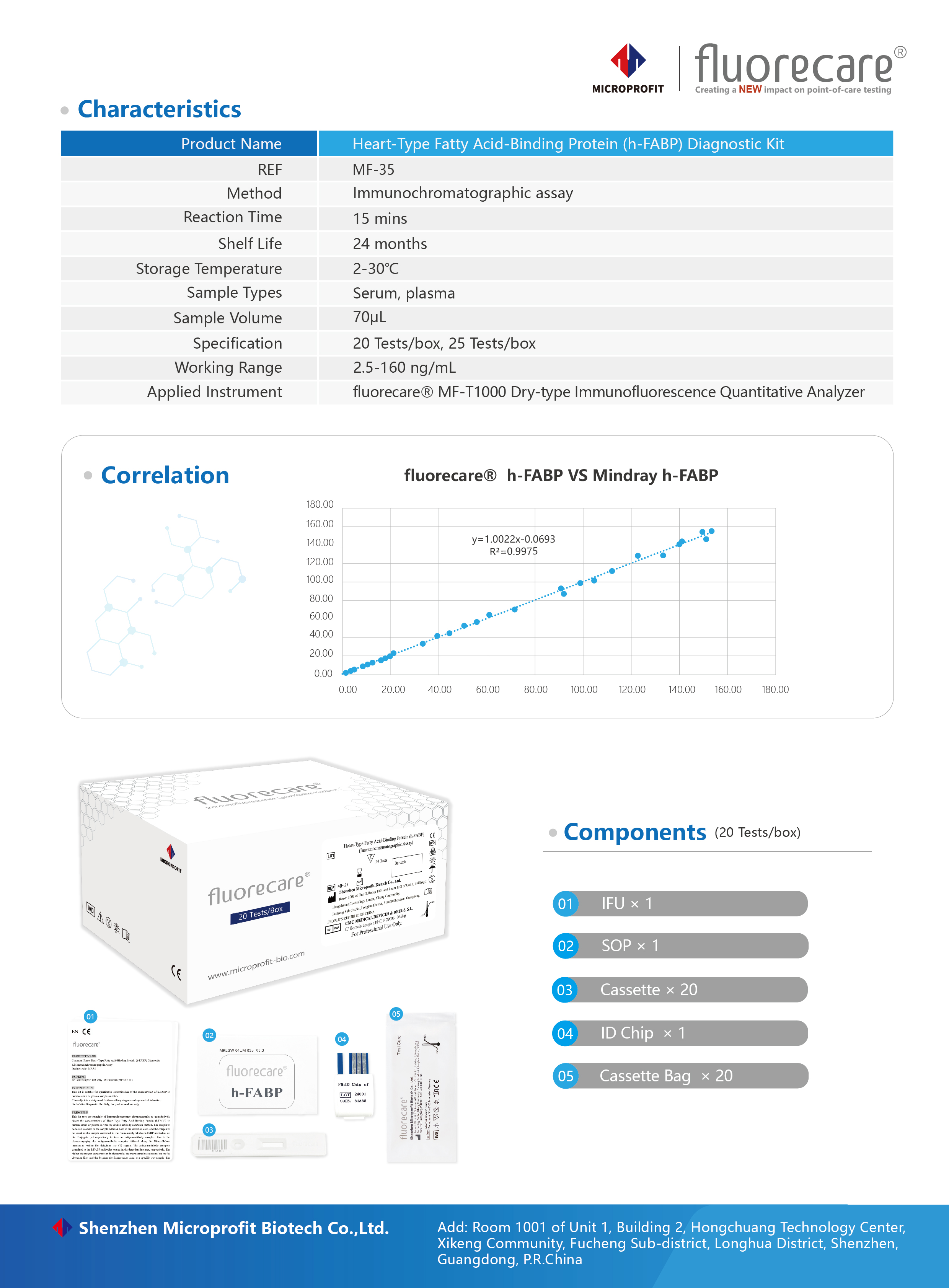Heart-Type Fatty Acid-Binding Protein (H-FABP) Diagnostic Kit
Overview
Heart-Type Fatty Acid-Binding Protein (H-FABP) is a small cytoplasmic protein (~15 kDa) primarily expressed in cardiac muscle cells. It functions as a fatty acid transport protein and plays an essential role in energy metabolism within the myocardium.
During myocardial ischemia or injury, the integrity of cardiac cell membranes is compromised, causing H-FABP to be released rapidly into the bloodstream. Its serum concentration rises within 1–3 hours after myocardial injury, making it one of the earliest biomarkers of heart damage.
Clinical Significance
1. Early AMI Diagnosis
H-FABP is detectable much earlier than CK-MB or cardiac troponins, enabling rapid screening of patients presenting with acute chest pain. This early appearance provides a crucial diagnostic window during the first few hours after acute myocardial infarction (AMI) onset.
2. Complementary Marker with Troponin
When combined with Troponin I or T, H-FABP enhances diagnostic sensitivity and accuracy for acute coronary syndrome (ACS). The dual-marker approach supports both early and definitive diagnosis of cardiac injury.
3. Risk and Prognosis Evaluation
Elevated H-FABP levels are closely correlated with the extent of myocardial damage. Persistently high concentrations indicate a larger infarct size and are associated with worse clinical outcomes, supporting risk stratification and long-term management.
4. Therapy and Reperfusion Monitoring
H-FABP serves as a sensitive indicator of reperfusion injury following percutaneous coronary intervention (PCI) or thrombolytic therapy. Its rapid rise and fall pattern make it suitable for evaluating treatment efficacy and myocardial recovery.
Analytical Advantages
Modern H-FABP diagnostic kits based on fluorescent immunoassay (FIA) or POCT technology provide rapid and accurate quantitative results within minutes.
Key features include:
-
High analytical sensitivity and cardiac specificity
-
Quantitative detection within 15 minutes
-
Compatible with whole blood or serum samples
-
Applicable in emergency departments, ICUs, and POCT laboratories
Conclusion
As an early and sensitive cardiac biomarker, H-FABP plays a vital role in the rapid diagnosis of acute myocardial infarction, risk assessment, and therapy monitoring. Its integration into cardiac marker panels complements existing assays and enhances clinical decision-making in emergency and critical care settings.



